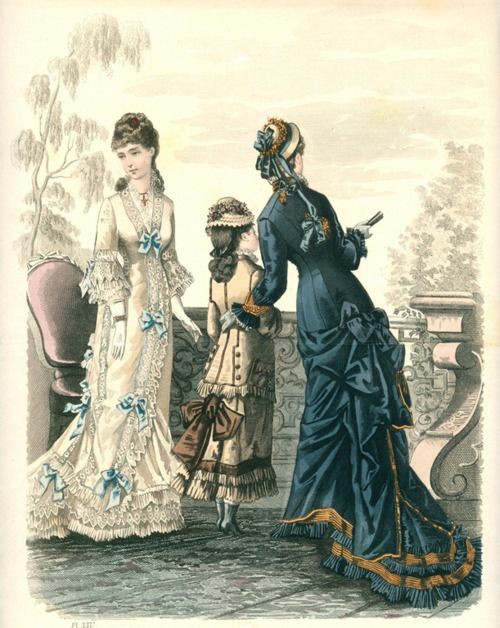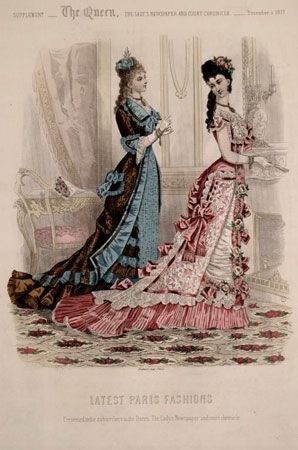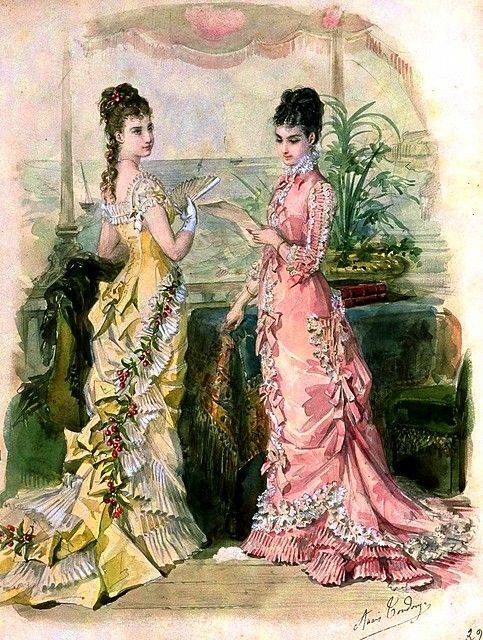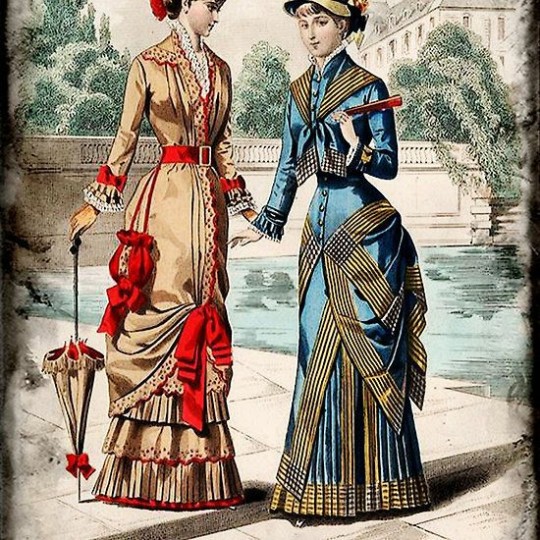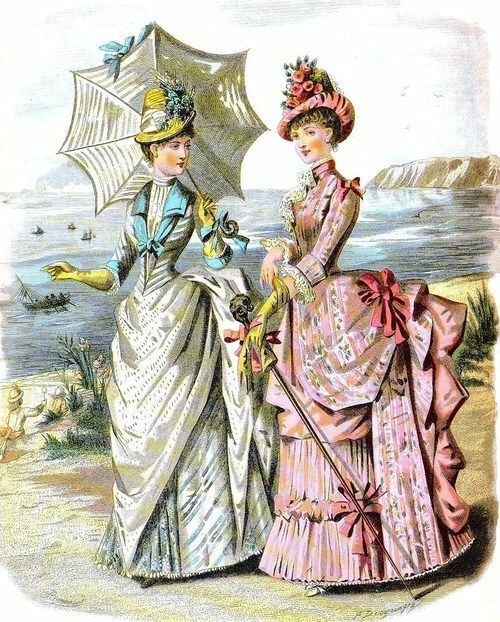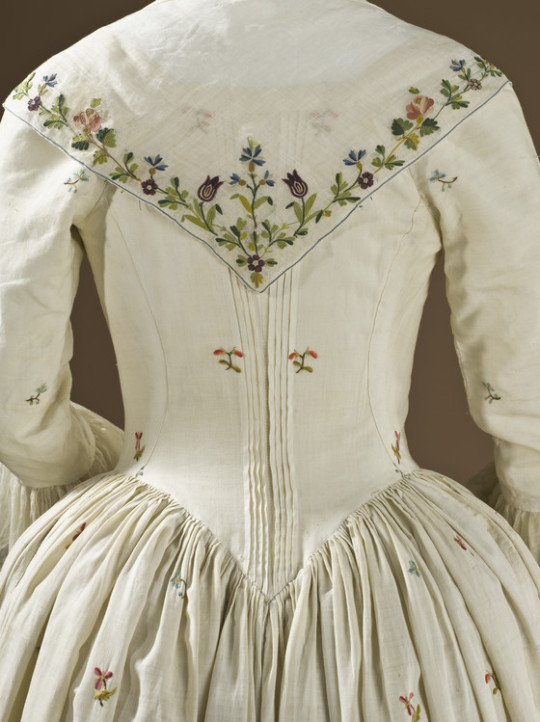Text
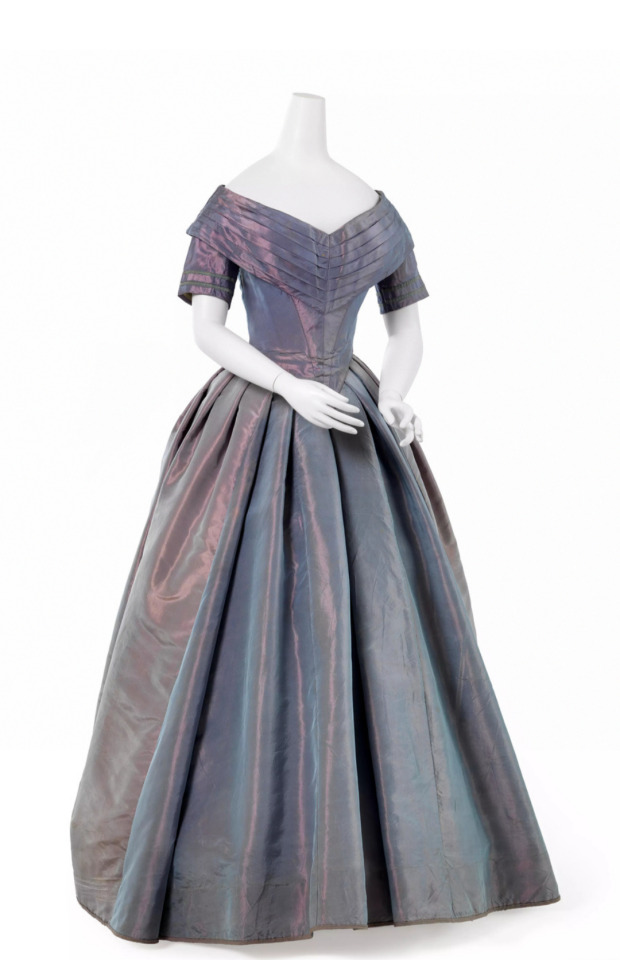

Ball gown, 1840-41
Maker: Unknown
From the collection of Wien Museum
15K notes
·
View notes
Text




• Walking dress.
Date: ca. 1893
Culture: French
Medium: Silk, cotton
592 notes
·
View notes
Text
"High Dress" pattern - 1830

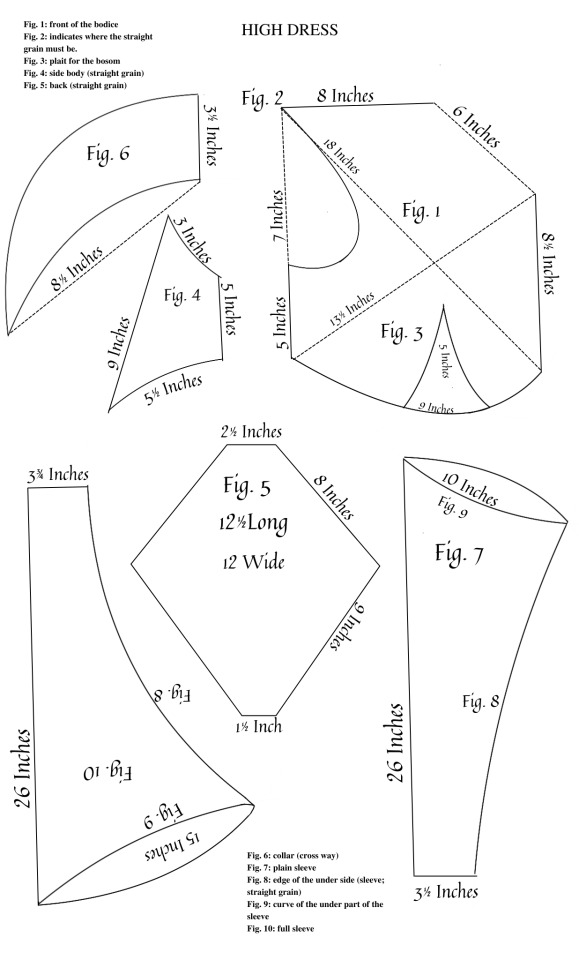
First pitcure: the original pattern
Second picture: traced/enhanced version made by me (please do not repost it).
For more instructions on how to cut/construct this garment, I’d advise you to read The Workwoman’s Guide and the original magazine where this pattern was published, The Female's Friend, and General Domestic Adviser.
15 notes
·
View notes
Text

‘La M. de la Corsets’: c. 1832 lithograph showing a dressmaker or tailoress and client. The undergarments depicted include sleeve-plumpers.
1830s Thursday: Big sleeves, and even bigger dreams for women’s rights.
The growing vulnerability of working women in industrial society provoked a forceful response. In 1825 hundreds of them went out on strike against New York City clothing houses. In 1831 these same women organized themselves into a mass-membership United Tailoresses’ Society. At a time when journeymen were still devoting their political efforts to a defense of artisanal prerogatives in the master’s shop, these “tailoresses” (the appellation itself testified to an advanced degree of industrial consciousness, excluding as it did the more traditional dressmaking of the “sempstress”) already understood that in a capitalist economy no aspect of the work relationship remained non-negotiable. […]
No one can help us but ourselves, Sarah Monroe, a leader of the United Tailoresses’ Society, declared. Tailoresses should consequently organize a trade union with a constitution, a plan of action, and a strike fund. Only then could we “come before the public in defense of our rights.” The Wollstonecraftian rhetoric was conscious. Lavinia Wright, the society’s secretary, argued that the tailoresses’ low wages and hard-pressed circumstances were a direct result of the way power was organized throughout society to ensure women’s subordination in all social relations.
— Michael Zakim, Ready-Made Democracy: A History of Men’s Dress in the American Republic, 1760-1860
I was disappointed in my search for pictures of Sarah Munroe, Lavinia Wright, or really anything to do with the United Tailoresses’ Society. One online article outright stated, “We know very little about this speaker, Sarah Monroe, other than that she was a garment worker and president of the newly formed United Tailoress Society – the first women-only union in the United States.”
I am in awe of this working-class woman, Sarah Monroe, who is quoted by Michael Zakim as saying in 1831:
It needs no small share of courage for us, who have been used to impositions and oppression from our youth up to the present day, to come before the public in defense of our rights; but, my friends, if it is unfashionable for the men to bear oppression in silence, why should it not also become unfashionable with the women?
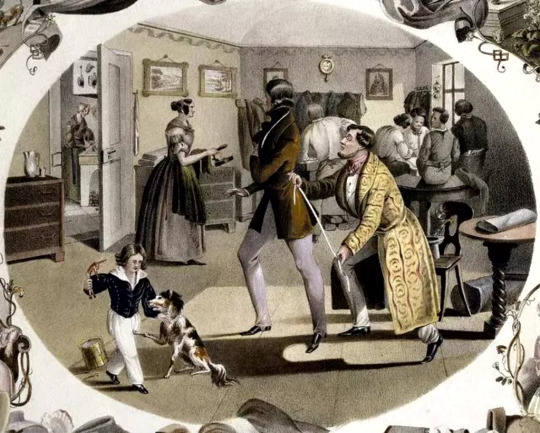
'The Tailor’s Shop’: 1838 lithograph by Carl Kunz and Johann Geiger
378 notes
·
View notes
Photo
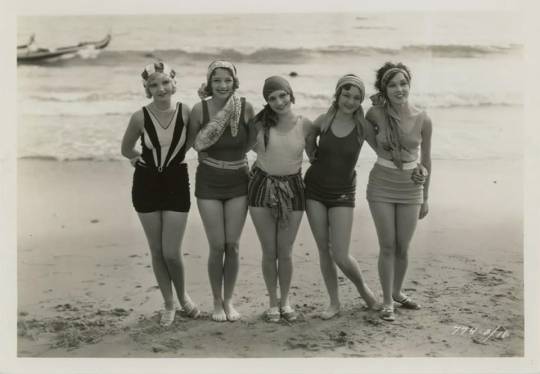
1929 Bathing Beauties on the beach. From America in the 1920′s, FB.
118 notes
·
View notes
Photo

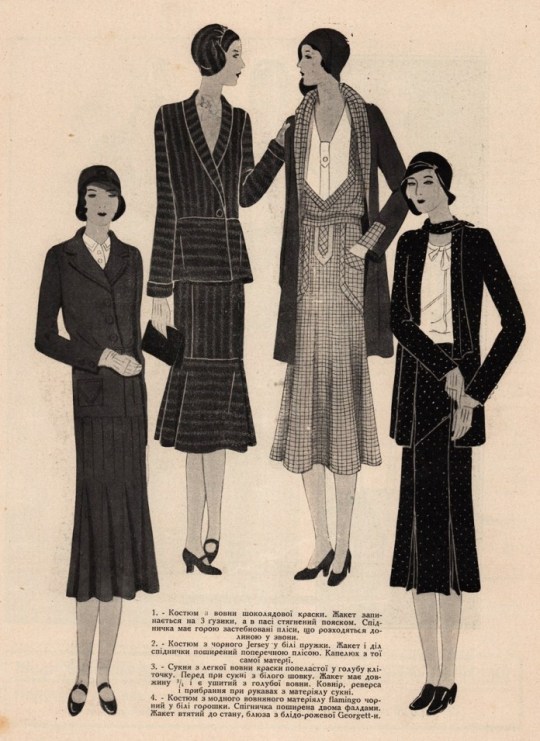



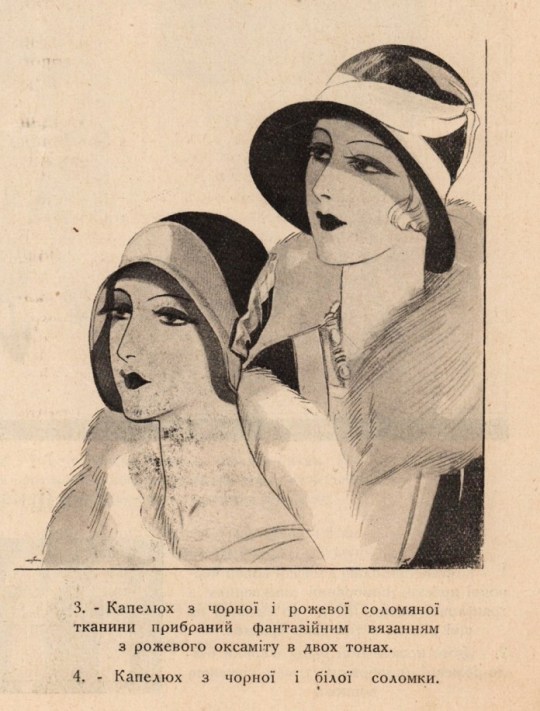
Autumn fashion from the September issue of the Nova Khata magazine, 1930
113 notes
·
View notes
Text
Update #2: I have now added the Workwoman's Guide (thank you ClusterFrock on Reddit for reminding me of this one!)
Victorian books on pattern making/garment cutting (bonus: some Edwardian ones as well):
The Workwoman’s Guide (1838)
The Archetypal Consummation (1845)
The Garment Cutter and Ladies Guide (1853)
The Science and Geometry of Dress (1876)
The Dress and Cloak Cutter (1881)
The National Garment Cutter (1884)
Hecklinger’s Ladies’ Garments (1886)
The National Garment Cutter (1888)
The Self-Balancing System of Cutting Ladies’ Garments (1891)
The Diamond Garment Cutter (1895) and its Instruction Book
The “Keystone” Jacket and Dress Cutter (1895)
Margaret Blair System of Garment Drafting (1897)
New Superlative System of Cutting Ladies’ Garments (1901)
The American System of Dressmaking (1907)
N. S. Sheifer’s System of Designing and Grading Ladies’, Misses’ & Children’s Garments (1908)
The “Standard” Work on Cutting Ladies’ Tailor-Made Garments (1908)
New Teacher of Ladies’ Home Tailoring (1910)
Rosenbleet’s Perfect System Of Ladies’ Garment Cutting (1911)
Please note that this post is just a compilation of books I have found online. I will be updating this list as I come across other great books.
From what I can remember, none of these books have patterns for stays/corsets. Don’t worry; if you are looking for stays/corsets, check this post instead.
233 notes
·
View notes
Text
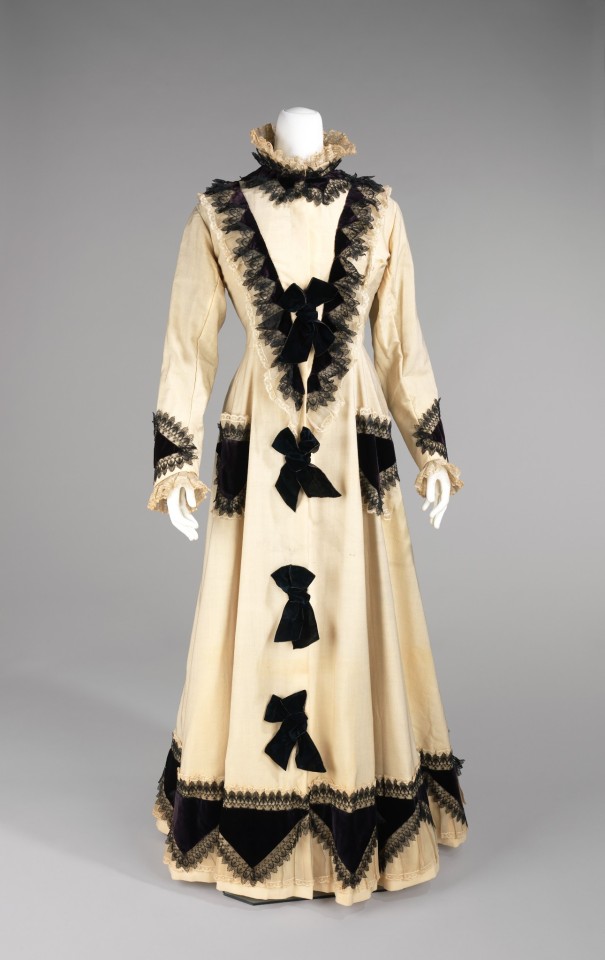

Teagown | 1875 | Brooklyn Museum Costume Collection
#historical costuming#historical fashion#victorian era#19th century#19th century fashion#fashion history#victorian#victorian fashion#fashion#1870s
61 notes
·
View notes
Photo

Bonnet
c.1867
Mrs. B. E. Hastings
Museum of Fine Arts, Boston
709 notes
·
View notes
Photo

Bonnet
c.1840
A. Partridge & Co.
Museum of Fine Arts, Boston
334 notes
·
View notes
Text

Evening dress (1850 - 1852) | American | The Met.
#this is one of my favourite dresses ever#Victorian#Victorian fashion#Victorian era#1850s#19th century#19th century fashion#fashion history#fashion#historical fashion#historical dress#historical costuming#dress#gown
105 notes
·
View notes
Text
Beige tea gown trimmed with long bishop sleeves and lace and pink satin ribbon with a Watteau back, 1880s.


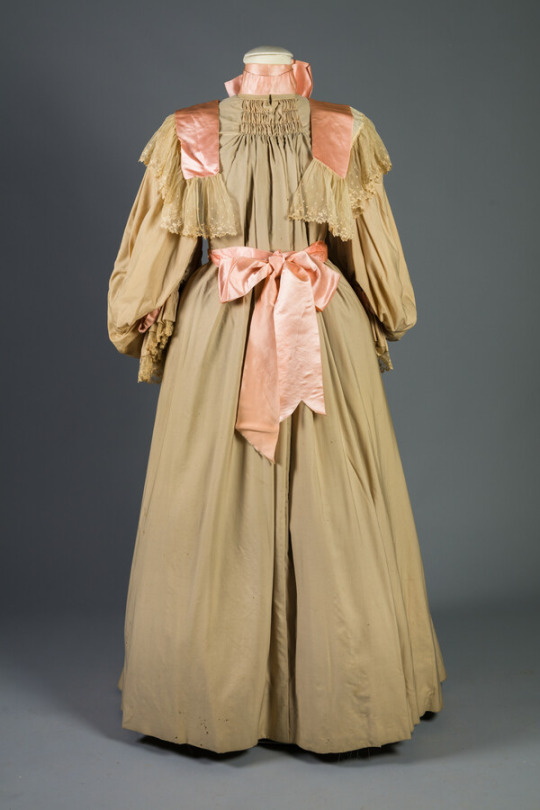
Maryland Center for History and Culture
213 notes
·
View notes
Text

Empress Eugenie’s 1850s floral crinoline is a bouquet of blooms, the shape of the skirt a posy.
548 notes
·
View notes
Text
"High Dress" pattern - 1830


First pitcure: the original pattern
Second picture: traced/enhanced version made by me (please do not repost it).
For more instructions on how to cut/construct this garment, I’d advise you to read The Workwoman’s Guide and the original magazine where this pattern was published, The Female's Friend, and General Domestic Adviser.
#historical costuming#historical fashion#victorian era#fashion history#19th century fashion#1830s#regency period#fashion#pattern#19th century
15 notes
·
View notes
Text
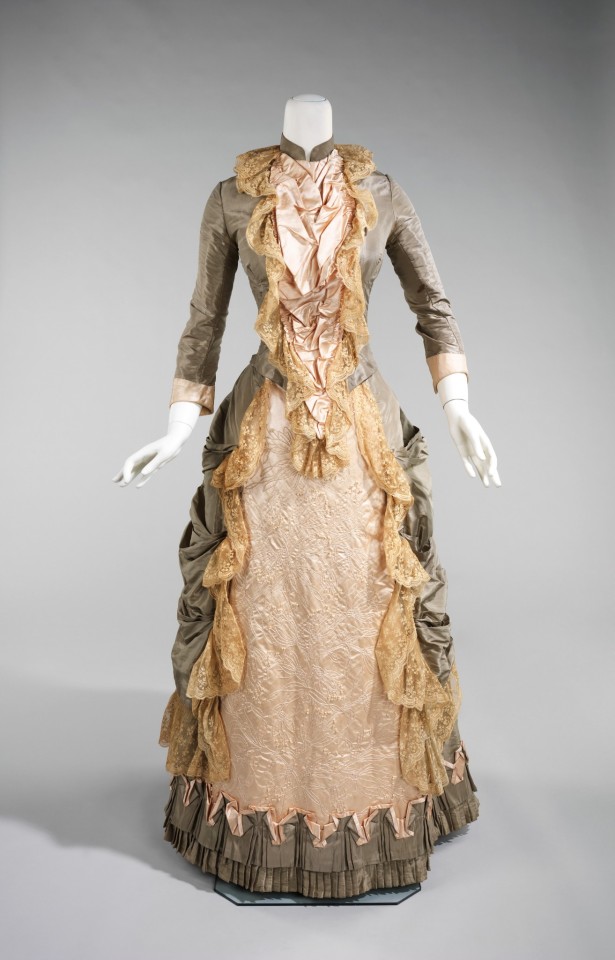

1880s | The Met
#historical costuming#historical fashion#victorian#victorian era#fashion history#19th century fashion#1880s#19th century#Victorian fashion
115 notes
·
View notes

